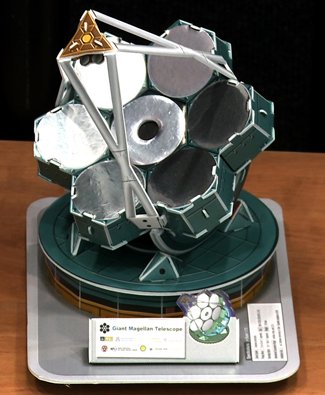Aussie scientists help design giant telescope

AUSTRALIAN SPACE SCIENTISTS WILL help unlock the secrets of the early universe through advanced technologies being developed in Canberra.
Researchers at the ANU’s Mount Stromlo Observatory will design a number of parts for the $700 million Giant Magellan Telescope (GMT), to be the largest optical telescope ever built. It is being constructed by an international consortium, of which ANU is a part.
Professor Harvey Butcher, director of the Research School of Astronomy and Astrophysics, says the new centre and the technologies it will produce will help scientists look back in time to the earliest periods of the universe.
“The biggest telescopes we have now allow us to see objects in which the light has taken five or six or seven billion years to come to us – really far away – so we can look back in time and see what these galaxies were like five, six or seven billion years ago,” Harvey says.
“The very first objects formed about 12.5 billion years ago, and we would like to see them, so we are designing the GMT that will be able to see objects so far away that the light has taken the whole history of the universe to come to us.”
10 times sharper than Hubble Space Telescope
The telescope will sit high atop the Chilean Andes and when completed in around 2018, will provide images up to 10 times sharper than the Hubble Space Telescope, allowing astronomers to gaze at objects over 12.5 billion light-years from Earth.
On Monday Science Minister Kim Carr launched the next stage of the Advanced Instrument and Technology Centre’s (AITC) expansion of projects related to the Magellan telescope.
“It will tell us about the early universe including the formation of the first stars and the evolution of galaxies only a few million years after the Big Bang,” he said, adding that the federal government is contributing $88 million towards the construction of the new part of the centre, with the total contribution for the whole project approaching $220 million.
“We have some of the greatest astronomers in the world working in Australia, and we have got to make sure that we provide them with the very best equipment so that they can continue their work bringing new inventions to Australians and making sure that we maintain our standard of living in this country,” he says.
The AITC will help design parts for the Magellan telescope including an instrument to pick up the most distant objects in the universe and adaptive optics technology that will remove the blur that arises from looking through our atmosphere. The next stage of the centre is due to be completed in July this year.
RELATED STORIES

